ESTHER PHILLIPS / “Home Is Where The Hatred Is”
Esther was a great singer: she thrilled you no matter what she sang. Finding a song that would have the magic that would get the teenagers to go out and buy was difficult. She was a mature singer at a time when the age level of record buyers was fourteen, fifteen. She wasn’t up for doing the kiddy shit. We had a tough time coming up with material that would let her release that emotion she had as a singer… —Ahmet Ertegun http://www.soultracks.com/esther_phillips.htmAmerica is a nation of junkies. Start with that! We don’t hesitate to condemn illegal drug use, but it’s us hooked on nicotine and caffeine, sugar and salt, not to mention America’s insatiable appetite for prescription pain killers. Shit, most of us can’t make it through the day without a little help from our tiny-but-powerful friend Tylenol or one of its many siblings. Pain killers. That’s it. If you’re an average American you “need” some kind of pain killer if you’re going to remain relatively sane as you struggle to make a living day to day. Gil said more than a mouthful when he wrote “Home Is Where The Hatred Is.” Now, take Little Esther Phillips. Sister-girl started out real young, a teenager in the music business. At fourteen “Little Esther Phillips” was touring with Johnny Otis and by fifteen she was cutting hit records. Undoubtedly it was a thrill, but there also were some very vicious conditions. The system always takes advantage of a woman, of a musician, of a Negro—imagine if you were a Black female singer who was also a teenager. It wasn’t nothing nice.
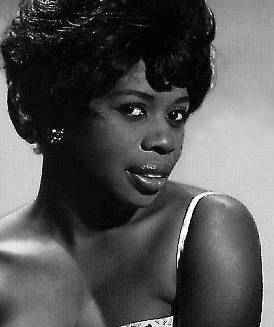 Plus, she ain’t look like no Lena Horne, not to mention didn’t sound like nothing on the verge of white acceptability. Her voice had that Black twang and tremble in it, plus it was nasal, up high, would never be mistaken for a purring kitten. Indeed there was more than a touch of snarl up in her sound. Anyway before she was twenty she was using. Before thirty she was a recovering (or should I say “reoccurring”) addict.
She had a career of extreme highs and excruciating lows, going from hit records to no contract in a repetitious and wearying cycle of adulation and rejection.
Born Esther Mae Washington, 23rd December 1935 in Galveston, Texas, she died of cirrhosis of the liver and kidney failure on August 7, 1984. That’s the skeleton of her career.
Plus, she ain’t look like no Lena Horne, not to mention didn’t sound like nothing on the verge of white acceptability. Her voice had that Black twang and tremble in it, plus it was nasal, up high, would never be mistaken for a purring kitten. Indeed there was more than a touch of snarl up in her sound. Anyway before she was twenty she was using. Before thirty she was a recovering (or should I say “reoccurring”) addict.
She had a career of extreme highs and excruciating lows, going from hit records to no contract in a repetitious and wearying cycle of adulation and rejection.
Born Esther Mae Washington, 23rd December 1935 in Galveston, Texas, she died of cirrhosis of the liver and kidney failure on August 7, 1984. That’s the skeleton of her career.
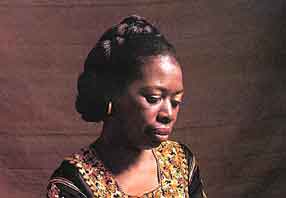 While she certainly deserves, and will receive a broader examination here on BoL, right now we are focusing on her 1971 version of Gil Scott-Heron’s pain-filled anti-paean about addiction. If you’ve never heard Esther inhabit the entrails of this song, you’re in for a shock. She is not merely singing the lyrics, she is scouring the cage of her life struggles in a moving testimony of naked sharing. There is not a single word of the song with which she has not cohabitated.
Of course it helps that the arrangement is hip, but it could hardly be lame with Esther quivering every end note of her phrases as though her throat was named Lucille and B.B. was playing her. Those little quivers, never overdone, but distinctive enough that it thrills you, and what an ironic thrill, sort of like constantly pulling at a scab on a scarred knee. And unlike lesser singers, she does not go for screaming and hollering to make clear the depth of her pain. In fact, given the depth of her emoting, silent scream is an apt description of how she employs space and softness to narrate a harrowing tale of hurt and horror.
While she certainly deserves, and will receive a broader examination here on BoL, right now we are focusing on her 1971 version of Gil Scott-Heron’s pain-filled anti-paean about addiction. If you’ve never heard Esther inhabit the entrails of this song, you’re in for a shock. She is not merely singing the lyrics, she is scouring the cage of her life struggles in a moving testimony of naked sharing. There is not a single word of the song with which she has not cohabitated.
Of course it helps that the arrangement is hip, but it could hardly be lame with Esther quivering every end note of her phrases as though her throat was named Lucille and B.B. was playing her. Those little quivers, never overdone, but distinctive enough that it thrills you, and what an ironic thrill, sort of like constantly pulling at a scab on a scarred knee. And unlike lesser singers, she does not go for screaming and hollering to make clear the depth of her pain. In fact, given the depth of her emoting, silent scream is an apt description of how she employs space and softness to narrate a harrowing tale of hurt and horror.
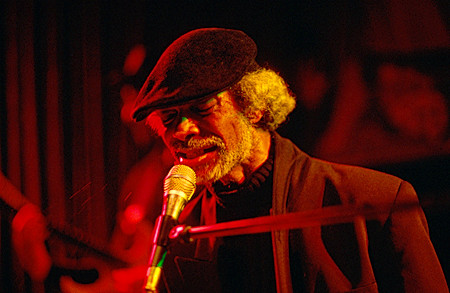 Were it not for Gil’s extended version on his last studio album, Spirits, I would otherwise consider Esther’s version definitive. But Gil goes off into Coltrane territory with his three-part exploration. Starting out rubatto, like a preacher warming up, Gil challenges his listeners to recognize that unless they’ve been there, they don’t really know how hard it is to return home as a junkie—“junkie” that’s the word he uses. Y'all remember Samuel Jackson as Gator in Jungle Fever? Or for that matter, Halle Berry as a junkie at the end of the same movie?
We can deny it if we want to, but dealing with junkies—either being a junkie or having a junkie in the family—is one of the hardest, and at the same time one of the most common, aspects of African-American life. So we have references, all of us can relate to the song, and thus when Gil takes a twenty-minute journey into the interior of addiction, complete with instrumental interludes, well, you may not like it, but you can’t deny its relevance, its touching realness.
Were it not for Gil’s extended version on his last studio album, Spirits, I would otherwise consider Esther’s version definitive. But Gil goes off into Coltrane territory with his three-part exploration. Starting out rubatto, like a preacher warming up, Gil challenges his listeners to recognize that unless they’ve been there, they don’t really know how hard it is to return home as a junkie—“junkie” that’s the word he uses. Y'all remember Samuel Jackson as Gator in Jungle Fever? Or for that matter, Halle Berry as a junkie at the end of the same movie?
We can deny it if we want to, but dealing with junkies—either being a junkie or having a junkie in the family—is one of the hardest, and at the same time one of the most common, aspects of African-American life. So we have references, all of us can relate to the song, and thus when Gil takes a twenty-minute journey into the interior of addiction, complete with instrumental interludes, well, you may not like it, but you can’t deny its relevance, its touching realness.
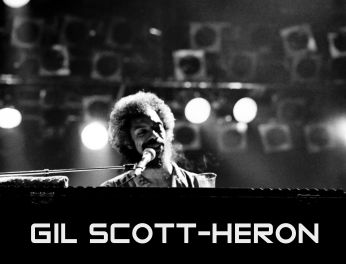 Gil’s long version is one of the greatest moments in modern American music, especially Part 3 with his hoarse repetition of “Kick it. Quit It. Kick it. Quit it.” This is a startling snapshot, much more than any Kodak moment was ever meant to be. Gil Scott-Heron. Are we prepared to deal with our realities?
—Kalamu ya Salaam
...To cast a stone
Gil’s long version is one of the greatest moments in modern American music, especially Part 3 with his hoarse repetition of “Kick it. Quit It. Kick it. Quit it.” This is a startling snapshot, much more than any Kodak moment was ever meant to be. Gil Scott-Heron. Are we prepared to deal with our realities?
—Kalamu ya Salaam
...To cast a stone I agree, "The Other Side" (Parts 1, 2 & 3) has to be considered the definitive version of "Home Is Where The Hatred Is." It's not often that an artist records a stone-cold classic then waits 23 years to upstage himself, but that's exactly what Gil does here. And, the Esther Phillips version is fantastic as well. Her 'quiet scream' practically nails you to the floor in its intensity. Her version demands your attention, forces you to listen closely to each word.
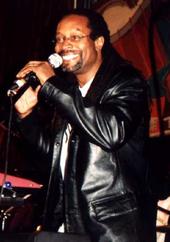 Then there's the Brian Jackson version which features Brian's former partner (that's Gil himself, in case you're not following along) doing a spoken-word cameo. Although Brian's version doesn't contain the pathos of Esther's version or either of Gil's versions, it is interesting for both its clear, clean stating of the melody and because we get to hear yet another side of the story from Gil himself.
Then there's the Brian Jackson version which features Brian's former partner (that's Gil himself, in case you're not following along) doing a spoken-word cameo. Although Brian's version doesn't contain the pathos of Esther's version or either of Gil's versions, it is interesting for both its clear, clean stating of the melody and because we get to hear yet another side of the story from Gil himself.
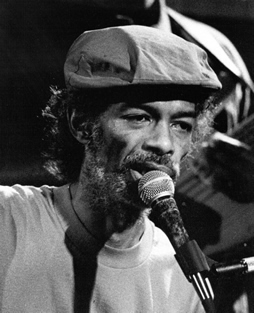 In the 'Classics' write-up, Kalamu opines that English professors would do well to teach a little Gil Scott-Heron along with the Shakespeare, Conrad and Ellison. Good point. And I'd add that they could simply start with "The Other Side": Gil's already done all the hard work. "The Other Side" reads like an episodic deconstruction of the themes and meaning of the original tune "Home Is Where The Hatred Is." The suite begins with a quiet but intense riff on the phrase ‘the other side’:
In the 'Classics' write-up, Kalamu opines that English professors would do well to teach a little Gil Scott-Heron along with the Shakespeare, Conrad and Ellison. Good point. And I'd add that they could simply start with "The Other Side": Gil's already done all the hard work. "The Other Side" reads like an episodic deconstruction of the themes and meaning of the original tune "Home Is Where The Hatred Is." The suite begins with a quiet but intense riff on the phrase ‘the other side’:
Opposite of new is old Opposite of young is old… Young ones wanna be old ones Old ones know what they could do if they was young ones People ain’t never really satisfied Folks ain’t never satisfiedSuddenly, Gil launches into the main narrative of the suite:
My friends all swear they know What I should do with my life How I should run my life What should be happening in my life They’re on the other side… Things always look so much better from the other side Four o’clock in the morning – they don’t know All the things I be needing – they don’t know Breaking out in a sweat and they don’t know Feeling bad and they don’t know Feeling down and they don’t know They don’t know the other sideLater, still in Part 1, Gil arrives at a solution. “I need to go home,” he sings. “Start all over.” After repeating a number of times and with increasing intensity that he’s going to go back home, he abruptly reconsiders. “I don’t want my Mama to see me this way. Daddy can’t see me this way. I can’t go home.” Part 2 is just as affecting. “My friends all say, ‘Quit it!’ ” Gil sings. “They don’t know how many times I’ve said I’m going to quit it. I done told myself a hundred times I’m gonna quit it.” A bit later, Gil decides, again, that he will quit it. “I’m going to quit it,” he says. “Then I’ll go home. Need a little bit of love in the morning. Somebody to help me get over this thing. I’ll go home. Start all over at home. Quit it. Then go home.” Part 3 is basically a hard, lean remake of the actual tune "Hatred." The major theme of "Hatred" is the idea that the junkie can "never go home again" (whether literally or figuratively) because ‘home’ is the source of his pain; coming on the heels of Gil presenting ‘home’ as the only source of salvation he sees, the already painful lyrics take on an added layer of meaning. The suite ends with Gil free-associating on some of the themes he’s been developing over the previous 15 minutes:
I been running and running, but I can’t get away… Everybody ain’t that strong… Gotta hold on to something… Can’t go home… If you could go home, Mama could help it Daddy could fix it… Can’t go home… Yes, I’d like to go home… Can’t go home Like to go home Can’t go home… Like to start all over If I could go home Like to go home Say, yeah, I’d like to go home…
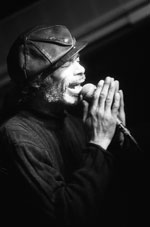 It's the last line that affects the most to me. The thing is, we're all, to some extent or another, hooked on something that ain't so cool. We all have times when we commit ourselves to foolishness, searching for the warmth and security of home. Searching for the metaphorical mother's womb. Among us are food addicts, anger addicts, work addicts, sex addicts, television addicts and of course, drug addicts. Who am I, I ask myself, to cast a stone at somebody else when I got things I could be working on myself? And in the end, what can I do other than I agree with Gil's final words? He concludes his sprawling masterpiece by saying, "Yeah, I'd like to go home." Me too, Gil. Me too.
It's the last line that affects the most to me. The thing is, we're all, to some extent or another, hooked on something that ain't so cool. We all have times when we commit ourselves to foolishness, searching for the warmth and security of home. Searching for the metaphorical mother's womb. Among us are food addicts, anger addicts, work addicts, sex addicts, television addicts and of course, drug addicts. Who am I, I ask myself, to cast a stone at somebody else when I got things I could be working on myself? And in the end, what can I do other than I agree with Gil's final words? He concludes his sprawling masterpiece by saying, "Yeah, I'd like to go home." Me too, Gil. Me too.—Mtume ya Salaam
This entry was posted on Sunday, May 7th, 2006 at 12:05 am and is filed under Cover. You can follow any responses to this entry through the RSS 2.0 feed. You can leave a response, or trackback from your own site.
4 Responses to “ESTHER PHILLIPS / “Home Is Where The Hatred Is””
May 9th, 2006 at 3:34 am
Fabulous. Her voice tells the story as much as the lyrics do. Thanks for this.
one love,
Ekere
May 9th, 2006 at 4:35 am
Oh, and like Mtume, when “Spirits” came out I thought that I wouldn’t want no parts of it. Then I heard it. I heard “The Other Side.” How mistaken I was. I bought it immediately.
one love,
Ekere
May 9th, 2006 at 10:35 am
My pain is with/for Esther n every Black woman who be bout life in music, in art, in family, in community. I’m still tryin to get ovuh/understand the pain that brought Phyllis Hyman to take herself out. On the other hand, I find my solace in may sistuhs, wild women, who birth/conceive and create in a place and space that denies their very essence. How proud I am to be an African American woman doing mah best to walk that walk, talk that talk to enable n empower myself and others to live/be/become.
May 9th, 2006 at 1:40 pm
Wow…this week was filled with so much social commentary and Gil worshiping that the element of music almost takes a back drop.
Music is a melodic tapestry of ideas based on human experiences. It analytical, vague, analog, and digital. Much is the case for sister Esther Phillips version of Home is Where the Hatred Is. That version is more of a 70’s Funk version…especially with the bass, horns, and orchestration. The Parallel Lines track is pretty good too. I always liked the original version of this song though. It was hip, defiant, raw, and upbeat. However when you disassemble the lyrics, the upbeat tempo is no match for the heavy pathos of drug addiction.
Many a classic song was written about drug use/ abuse, ‘Let’s Go Get Stoned’ {Ray Charles}, ‘Lucy in the Sky of Diamonds’ {Beatles}, ‘Legalize It’ {Bob Marley}, ‘Mary Jane’ {Rick James}, ‘Brown Sugar’ {D’Angelo}, ‘O.D.’ {The Last Poets}, ‘Gin and Juice’ {Snoop Dog}, etc. …and that isn’t including the countless Hip-Hop songs that talk about smoking weed, etc. Drug use as a societal ill is unescapable. Music is a reflection of people. So as long as people keep using, there will be music about it.
P.S., don’t forget that not only does Gil have the gift of words but he is also a pretty decent musician.
Leave a Reply
| top |